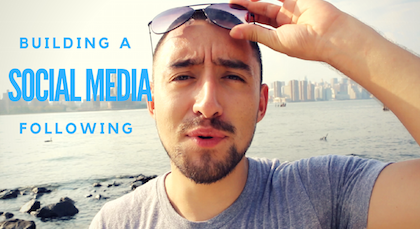I feel like the comments section for Kickstarter, Indiegogo, and other types of crowdfunding campaigns are highly underutilized.
Check out some of the high-priority reasons below why you should consider rethinking the comments section for your campaign.
1. Comments = Community
Discussion and sharing is at the heart of all communities.
If you take a look at a community that forms around any website or person, you will notice that there is a lot of interaction between the individual/website and his or her community, along with interaction between community members.
This interaction could take the form of: tweets, comments, fb/g+ shares, +1’s/Likes/Karma points, and even emails. It still surprises me that there are some very active email listserves that will share links and comment on recent news. I am part of several in the startup space.
This interaction is the hallmark of great blogs, forums, and social media groups.
If the goal is to build a community that supports your new initiative or wants to be a part of your movement, then the comments section is where the foundation is laid.
Check out what Seth Godin says about creating a community, the author of the bestselling author of Tribes: We Need You to Lead Us
2. Building a relationship with your fanbase
There is a reason that I give out my email address (sbriggman@crowdcrux.com) and provide free advice for Kickstarter and Indiegogo projects on KickstarterForum.org every day. I want to stay hyper-connected to my community.
By encouraging and incentivizing backers to leave comments, ask questions, make recommendations, and even share resources/links relevant to your project, you will have the opportunity to interact with them in an open forum.
It’s a way that backers and potential backers can get to know you better. I don’t know about you, but I’m far more willing to share one of my friend’s new initiatives on Facebook than a stranger’s.
Earn your backers trust and earn the right to comfortably ask them to share your project on their social network. Not only will you increase the likelihood of spreading the word about your new initiatives, but you may get to know some awesome people in the process!
The famous Oculus Rift campaign, which raised over $2 million on Kickstarter in 2012 and generated over 2,000 comments from 9,522 backers has been in the news recently for selling to Facebook for $2 billion. This has caused a lot of backlash from their Kickstarter backers for various reasons.
What’s amazing is that two years later, the backer community is still leaving comments on the Kickstarter page and sharing links. Check out the image below where I’ve included some of the recent comments on their campaign. Comments = Community.
3. Engagement Factors Into Ranking Algorithms.
On Indiegogo, comments impact your project’s gogofactor, or the unbiased algorithm that determines whether or not your project will be featured on the front page of the website.
According to this VentureBeat interview with Indiegogo cofounder Slava Rubin, “It takes into account how many comments and social shares the page has, how many times the author uses the page to communicate, how often they update the page, as well as if the project is actually attracting funding. These factors all determine whether a project is featured on the homepage, as well as in newsletters and other promotional materials.”
Let’s be honest. That’s kind of vague. Thankfully, Tara Reed, who ran an Indiegogo campaign for her novel, Coulda, Woulda, Shoulda: A Novel Approach to Dating, shared some furthur insights in this killer blog post, which I’ve quoted below.
“They didn’t mention that no matter how highly gogofactor ranks you, and no matter how high or low your funding goal, until you hit 20%, you won’t appear in Most Popular or be eligible for all that great promotion and featured placement that drives thousands of unique views to your page, hopefully converting into funding.”
“My brother figured it out and funded my campaign to 20%. I instantly became the 15th campaign in Most Popular, 1st when filtered by Canada. I moved up 76 places from my rankings in All Campaigns. My gogofactor was so high, I was outranking a campaign that had thousands more social media shares and had already funded 500% of their $10,000 goal.”
4. Customer Service Center
Your comment section is your customer service center. Be attentive! You don’t want any of your backers to leave complaints about your project on forums or write angry blog posts if they have a problem that is not being addressed.
You can see how this has happened on the KickstarterForum here.
Make it super clear that you will respond to any and all customer service inquiries via your comments. section.
As a rule of thumb:
 – Never leave an angry, condescending, or argumentative comment.
– Never leave an angry, condescending, or argumentative comment.
– Respond to all comments politely in proper grammar and english (even if the comment is not).
– This may seem simple, but try making use of smileys and emoticons to convey emotion. “Thanks.” Has a different feel than “Thanks :-).” Your goal is to build a relationship with your backers.
– Ask follow up questions to spur discussion.
5. Testimonials
If your goal is to use crowdfunding as a platform to launch your dream business or project, it’s likely that farther down the road, you will be working to attract real customers.
With the permission of your backers, you could use any comments you receive as testimonials to jumpstart your new business. After you have shipped your rewards, why not ask your backers to leave a testimonial comment on your Kickstarter or Indiegogo page?
Not only is this good for your business, but it will also clue you into some of the features that backers really like and advice that can be used to guide future product improvement.
Did you find this article to be helpful?
Share your thoughts in a comment below so that I will know to write more like this!






